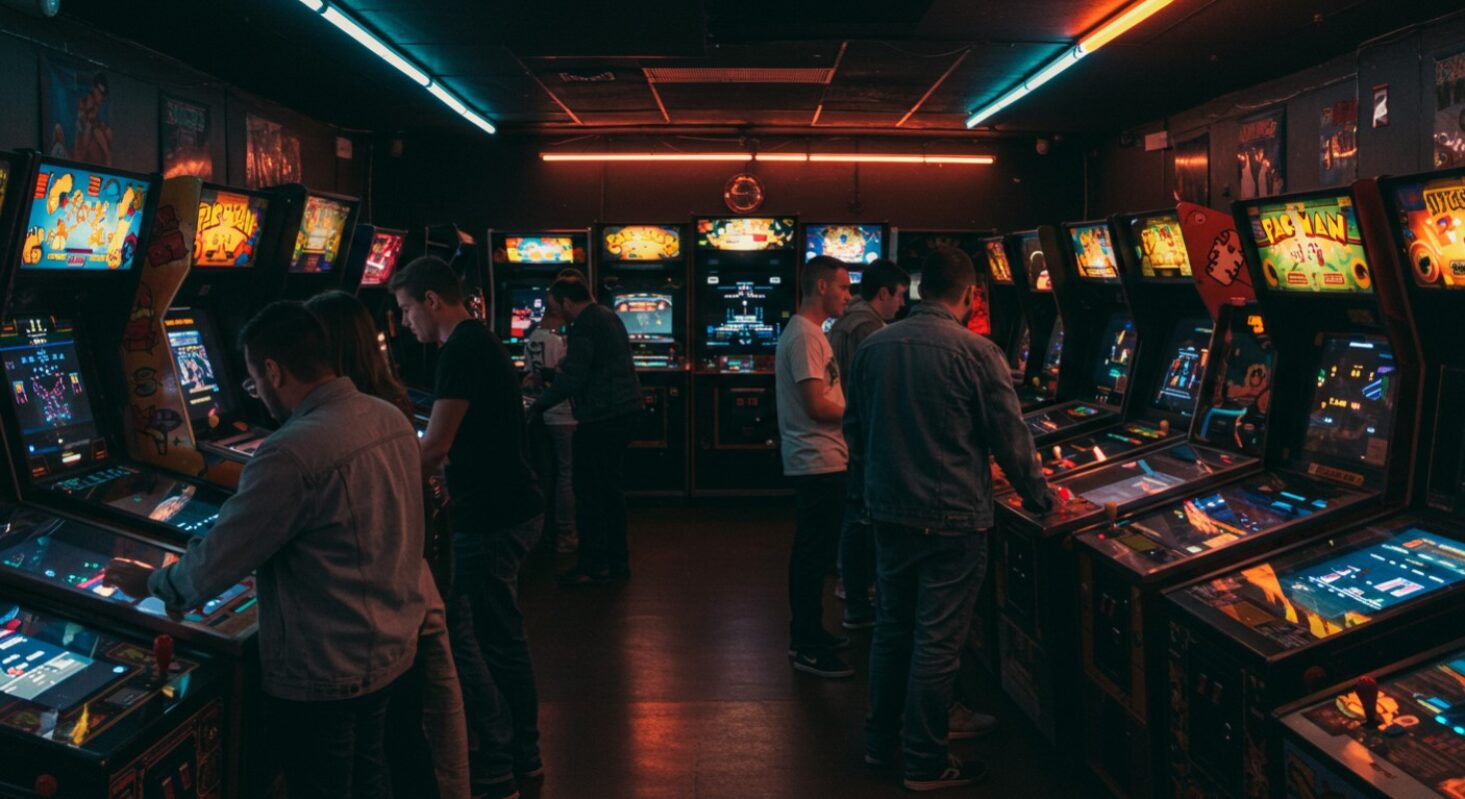
Why Are Arcade Machines Still Popular Today?
The world of gaming has changed dramatically over the last four decades. Today, millions of people play high-definition games on powerful home consoles, immersive PCs, and convenient mobile devices. Online platforms connect players across continents, and streaming services make it possible to watch others play in real time.
Yet despite this digital revolution, arcade machines have never fully disappeared. They remain a presence on British seaside promenades, in family entertainment centres, and increasingly in trendy arcade bars in cities such as London and Manchester.
So, why are arcade machines still popular today when players have access to limitless entertainment at home? The answer lies in nostalgia, social interaction, physical immersion, and the unique character of arcade machines themselves. Arcades offer something consoles and mobiles cannot replicate: a communal, tangible, and often larger-than-life experience
This article explores the enduring appeal of arcade machines, tracing their nostalgic pull, their social and physical attractions, their place in the UK, and the innovations that keep them relevant today.
Nostalgia and the Pull of Retro Gaming
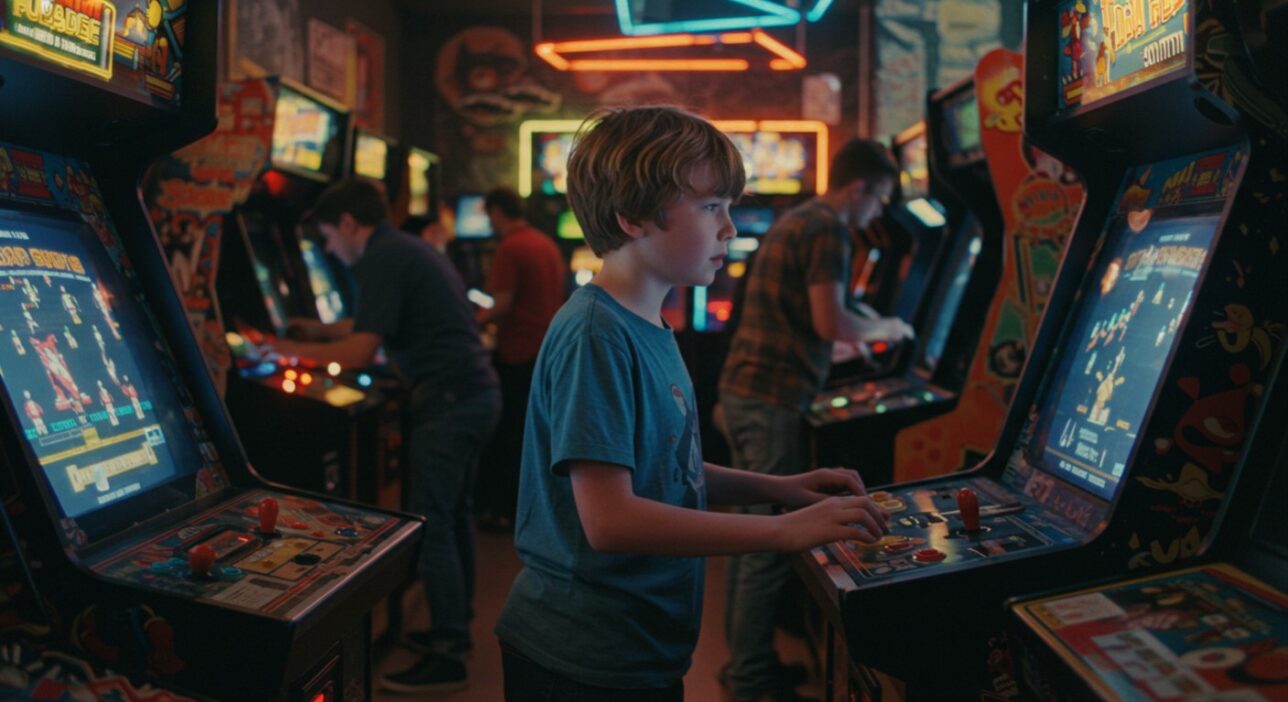
One of the strongest reasons arcade machines remain popular is nostalgia. For adults who grew up in the 1980s and 1990s, stepping into an arcade is like stepping back in time.
A Link to Childhood and Youth
Classic machines such as Pac-Man, Donkey Kong, Space Invaders, and Street Fighter II are more than games; they are cultural touchstones. They represent afternoons spent with friends in seaside arcades, the thrill of inserting a 10p coin and seeing how far your skills could take you, and the pride of entering your initials onto a high-score table.
In the UK, many people associate arcades with holidays to Blackpool, Brighton, or Southend, where the glow of flashing cabinets and penny machines was as much a part of the trip as fish and chips. Revisiting these machines allows adults to relive that sense of wonder and fun.
Retro Machines as Cultural Icons
Retro games are also celebrated as part of gaming history. For enthusiasts, playing the original cabinet of Asteroids or Galaga is akin to handling a vintage record player rather than streaming a song online. There is an authenticity in the original machines—the click of the buttons, the hum of the monitor, the weight of the joystick—that cannot be recreated by emulators or remakes.
This nostalgic connection has given rise to retro arcades and bars that proudly display collections of classic cabinets. They attract not only older players reliving their youth but also younger gamers curious about the roots of the medium.
The Social Side of Arcades
Another enduring strength of arcades is their social element. Gaming at home, while convenient, is often solitary or limited to online interactions. Arcades bring people together physically, creating shared moments of competition and laughter.
Competition in Public
Arcades thrive on competition. Fighting games such as Street Fighter II, Tekken, or Mortal Kombat encouraged players to face off against friends or strangers, with spectators cheering on every move. Racing games like Daytona USA or Mario Kart Arcade GP offer multiplayer setups where groups can compete side by side.
The presence of an audience heightens the tension. Winning in front of others feels more satisfying, while losing carries the sting of public defeat. This communal energy is something home gaming struggles to match.
Friends and Gatherings
Arcades also serve as social meeting points. In the past, they were common destinations for groups of teenagers, offering both entertainment and a safe, supervised space. Today, modern arcade bars revive this function, allowing friends to gather over drinks and retro machines.
Seaside arcades continue to bring families together. Parents introduce children to classic machines, grandparents try their luck on penny pushers, and siblings compete for tickets and prizes. The arcade’s ability to cater to multiple generations at once makes it a unique social environment.
Building Communities
Competitive scenes still exist around every types of arcade machines. Fighting game tournaments, pinball leagues, and high-score competitions keep local communities active. The shared experience of mastering a cabinet or chasing a record creates bonds among players.
The Physical and Immersive Experience
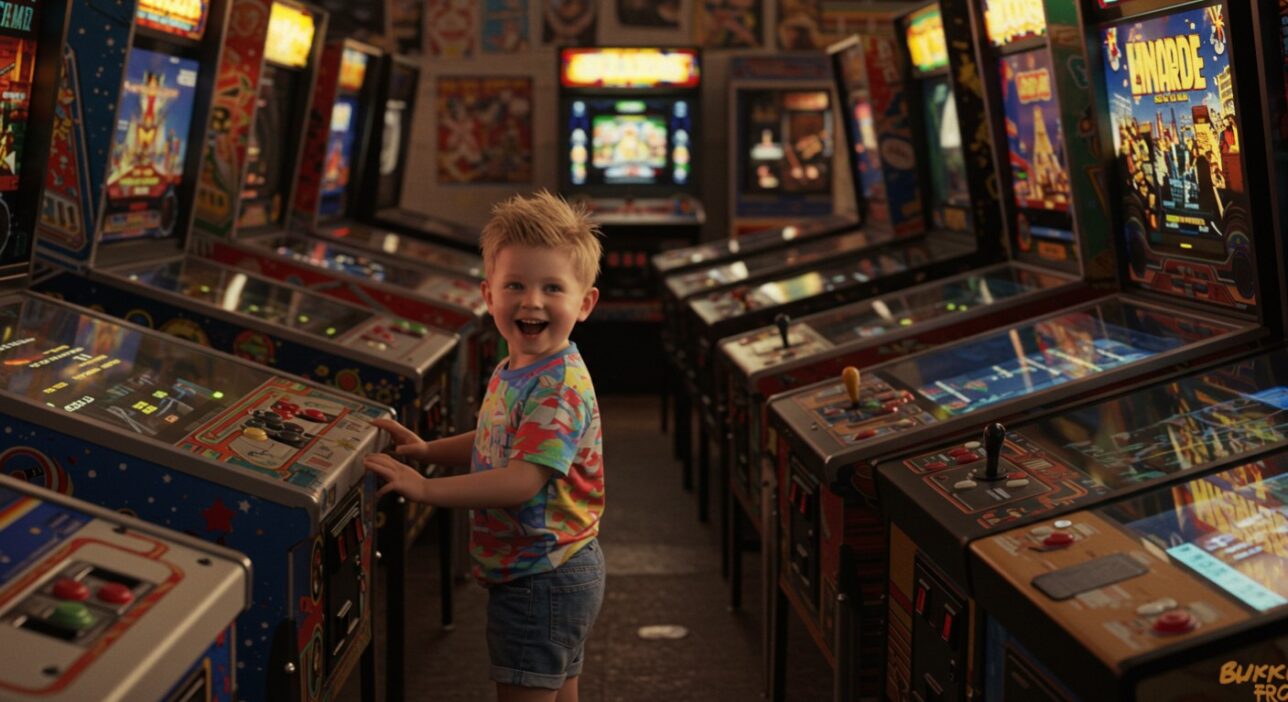
Arcade machines are designed to be physically engaging, offering an experience that controllers, keyboards, or touchscreens cannot replicate.
Larger-Than-Life Cabinets
Arcades excel in spectacle. Racing simulators feature full-size seats, steering wheels, pedals, and even motion platforms. Light-gun shooters such as Time Crisis or House of the Dead provide realistic weapons and immersive scenarios. Dance machines like Dance Dance Revolution or Pump It Up turn gaming into a physical workout.
These experiences are difficult, if not impossible, to reproduce at home. Even with modern VR headsets, the scale and communal energy of an arcade cabinet remain unmatched.
Tangible Interaction
There is something uniquely satisfying about the tactile nature of arcade controls: the resistance of a joystick, the slam of flipper buttons on a pinball machine, the stomp of feet on a dance pad. These physical interactions engage the body as well as the mind, making gameplay feel more visceral.
Sensory Appeal
Arcade machines stimulate multiple senses. The flashing lights, booming speakers, and rumbling vibrations create an atmosphere that pulls players in. Unlike quiet home setups, arcades are noisy, bright, and filled with energy—a key part of their enduring charm.
Variety of Games and Play Styles
Another factor in the survival of arcades is variety. Unlike home consoles, which focus primarily on video games, arcades offer a wider spectrum of play styles.
Video Games
Arcades showcase an array of genres: shooters, fighters, platformers, racing, and rhythm games. Many of these titles remain exclusive to arcade cabinets, providing incentive to visit in person.
Pinball
Pinball remains an arcade staple, with enthusiasts treating machines as works of art. Each table offers unique design, scoring strategies, and challenges. For some players, the blend of skill and physics keeps pinball timeless.
Redemption and Prize Games
Seaside arcades in the UK are dominated by redemption games such as penny pushers, claw machines, and ticket-based machines. These appeal to all ages, with the excitement of turning small coins into prizes. The popularity of these machines demonstrates that arcades are not solely about video gaming but about entertainment in many forms.
Family-Friendly Variety
Because arcades combine multiple game types, they appeal to diverse audiences. Children enjoy simple prize machines, teenagers gravitate towards competitive video games, and adults find satisfaction in pinball or nostalgic classics. This variety helps arcades remain relevant across generations.
Arcades in the UK Context
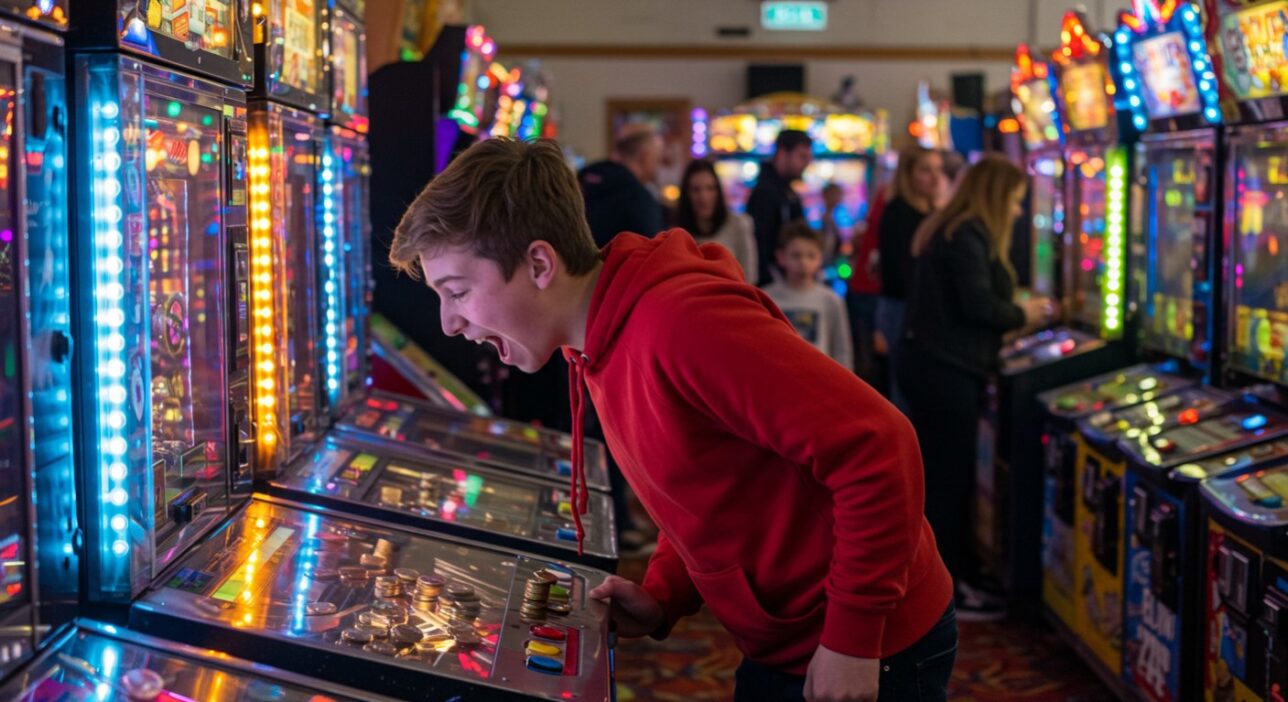
Seaside Arcades
In Britain, the arcade has a unique cultural footprint. Seaside resorts such as Blackpool, Brighton, Scarborough, and Southend became famous for their arcades, lining piers and promenades with flashing lights and coin-operated fun.
For families, arcades were an affordable leisure option during summer holidays. Even today, a visit to the seaside feels incomplete without playing a few rounds of penny pushers or trying to win a stuffed toy from a claw machine.
The 1980s and 1990s Boom
Arcades also thrived in shopping centres and high streets during the 1980s and 1990s. The Trocadero in London became legendary, housing dozens of machines and attracting players from across the country. For many UK gamers, these years represent the heyday of arcade culture.
The Modern UK Scene
Although many arcades declined in the 2000s, they have re-emerged in new forms. Retro bars in London, Manchester, and Leeds offer collections of classic machines alongside food and drink. Family entertainment centres keep the tradition alive in smaller towns. Meanwhile, dedicated venues host pinball tournaments and fighting game events.
Arcades remain part of Britain’s leisure culture, bridging nostalgia with modern entertainment.
Modern Innovations Keeping Arcades Alive
Arcades have survived not only through nostalgia but by adapting to new technology and tastes.
Virtual Reality Arcades
VR has opened fresh possibilities. VR arcades provide immersive experiences too costly or complex for home use, such as multiplayer zombie shooters or full-motion racing simulators.
Online Leaderboards and Connectivity
Modern machines link with online systems, allowing players to compare scores globally. This adds a new layer of competition and keeps players returning.
Retro Revival
Manufacturers reissue classic cabinets in smaller forms, allowing collectors to own pieces of arcade history. At the same time, arcades themselves celebrate retro machines, drawing crowds eager to play the originals.
Themed Entertainment
Arcades now often form part of larger entertainment complexes, from bowling alleys and cinemas to themed restaurants. By offering a mix of activities, they appeal to broader audiences and secure their place in modern leisure.
Why Arcades Still Compete with Home Gaming
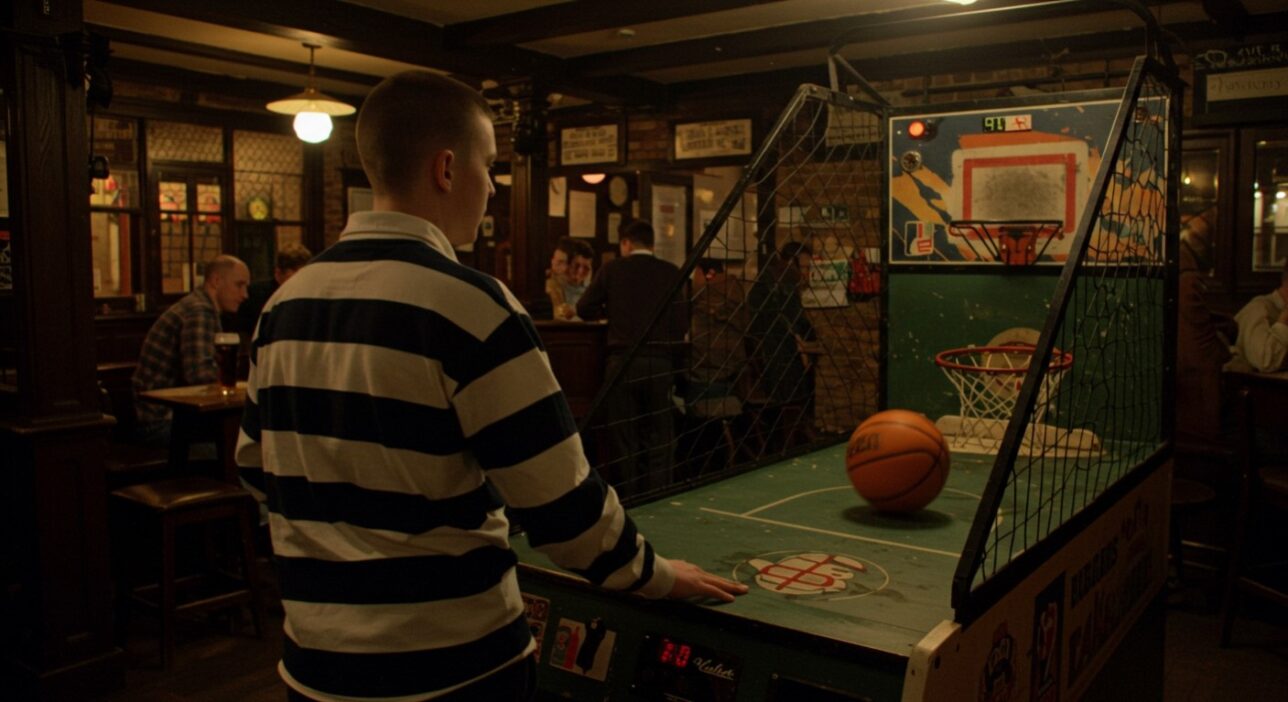
With so many gaming options at home, why do players still choose arcades?
Atmosphere Over Convenience
Home consoles may offer convenience, but arcades provide atmosphere. The noise, lights, and energy of a buzzing arcade are impossible to recreate in a living room.
Unique Cabinets
Many arcade machines rely on hardware too large or expensive for home use. Motion platforms, oversized screens, and full-scale driving rigs ensure arcades deliver experiences consoles cannot match.
Group Play and Social Energy
Perhaps most importantly, arcades are about playing together. While online gaming connects players virtually, standing shoulder to shoulder with friends or strangers, competing or cooperating in real time, offers a thrill that technology alone cannot replicate.
Conclusion: Why Are Arcade Machines Still Popular Today

Arcade machines remain popular because they offer something timeless. They are more than just games; they are experiences that combine nostalgia, social energy, physical interaction, and innovation.
In the UK, arcades continue to thrive in seaside towns, family entertainment centres, and city-based arcade bars. They adapt with modern technology, from VR to online leaderboards, while preserving the classics that defined generations.
At their heart, arcades endure because they remind us that gaming is not just about screens and scores—it is about people coming together, sharing excitement, and making memories. Whether you are chasing tickets in a Blackpool arcade, competing on a retro Street Fighter II cabinet in Manchester, or trying out a VR experience in London, arcade machines continue to matter.
They remain, and will remain, a timeless part of gaming culture.


